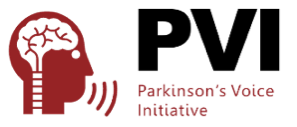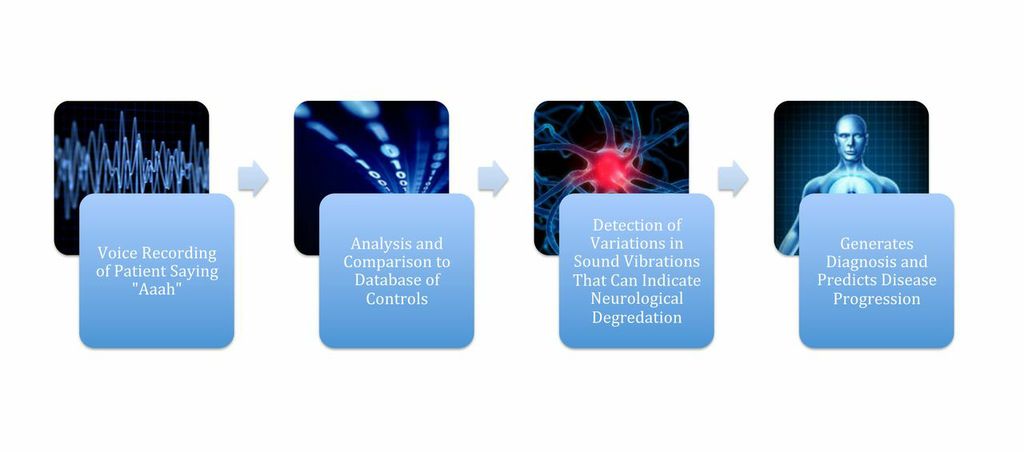Parkinson’s disease is the second most common neurodegenerative disease, affecting 6.2 million people globally.1 It is most prevalent in the elderly, though 5-10% of diagnoses reflect early-onset Parkinson’s disease. For some individuals, symptoms may begin as early as age 20.1 Early warning signs of Parkinson’s disease usually involve impairment of movement, including uncontrollable shaking, rigidity, difficulty walking, and unsteady gait. As the disease progresses, cognitive and behavioral complications may arise, commonly leading to dementia.2
There are currently no cures for Parkinson’s disease, and the exact mechanisms leading to the loss of brain cells observed in patients are largely open to debate. Medications, surgery, and multi-disciplinary treatment, however, are widely adopted for relief of disease symptoms. Drugs are especially effective in delaying degeneration of motor functions. For instance, the average time between initial disease onset and complete dependency on care-givers increases from 8 years without treatment to 15 years with regular usage of a single drug, Levodopa.3 However, pharmacological interventions must be initiated in early stages of disease in order to be efficient, as motor symptoms progress aggressively in the early stages if left untreated, leading to irreversible disabilities.
Effective treatment and early diagnosis for Parkinson’s disease are hindered by a lack of quantifiable biomarkers and objective measures of disease progression. As there are no diagnostic lab tests available for Parkinson’s disease, the current gold-standard for diagnosis relies on an in-clinic neurological test and brain scans to rule out other neurological causes of symptoms.1 This process is extremely costly and requires a high level of expertise, placing stress on existing medical infrastructure. With improving life expectancies in developing countries and an aging population in many developed countries, early and accurate diagnosis of Parkinson’s disease will undoubtedly pose an increasing challenge for current healthcare systems.
Researchers have proposed a new model for diagnosis of Parkinson’s based on speech recognition and machine learning technologies. Introduced by Dr. Max Little, Chairman of Parkinson’s Voice Initiative, this approach requires only a single sound recording of sustained phonation (saying “aaah”) from patients. Voice processing tools subsequently analyze the sound recordings and compare them to a database of recordings of Parkinson’s patients and non-Parkinson’s patients that serve as a control. The algorithm developed by this research team is able to detect specific variations in sound vibrations linked to vocal tremors, breathlessness, and weakness. By detecting such voice changes that are indicative of neurological degeneration, the algorithm is able to generate accurate diagnoses and predict disease progression based on the presence and severity of such degenerative symptoms.4
 Although the project is still in the early stages of development, preliminary results are promising; the team claims a 99% success rate in positive diagnoses of Parkinson’s disease.5 Accuracy aside, the proposed modality of diagnosis has significant benefits over conventional analytical methods. The research team has not published exact cost estimates, but the method is predicted to be ultra-low-cost once it is marketed and fully operational. As the process of analysis is computerized, no medical professionals or additional administration are required for analysis and final diagnosis. This approach is thus very attractive to areas with less-developed medical infrastructure. Speech-based tests can also be easily scaled-up in response to higher demands by increasing computational capacities. Since voice recordings can be readily obtained and transferred using existing telecommunication systems, remote diagnosis is also possible, increasing access to rural areas or regions with poor healthcare programs. Remote testing also makes large-scale screening feasible in areas without the capacity to support high numbers of clinical consultations.
Although the project is still in the early stages of development, preliminary results are promising; the team claims a 99% success rate in positive diagnoses of Parkinson’s disease.5 Accuracy aside, the proposed modality of diagnosis has significant benefits over conventional analytical methods. The research team has not published exact cost estimates, but the method is predicted to be ultra-low-cost once it is marketed and fully operational. As the process of analysis is computerized, no medical professionals or additional administration are required for analysis and final diagnosis. This approach is thus very attractive to areas with less-developed medical infrastructure. Speech-based tests can also be easily scaled-up in response to higher demands by increasing computational capacities. Since voice recordings can be readily obtained and transferred using existing telecommunication systems, remote diagnosis is also possible, increasing access to rural areas or regions with poor healthcare programs. Remote testing also makes large-scale screening feasible in areas without the capacity to support high numbers of clinical consultations.
Experts suggest that voice-based diagnosis will likely improve early intervention and management of Parkinson’s disease. Scientists have long suggested that voice degeneration may be one of the first detectable symptoms of Parkinson’s disease.7 Detection of voice changes in Parkinson’s disease patients would make it possible for earlier intervention before the onset of disabling physical symptoms. Treatments in the early stages of the disease are critical to delay further aggressive and irreversible neurological degeneration. Voice changes may also serve as an easily assessable and objective proxy to determine disease severity and monitor early trajectories of disease progression. Disease progression is routinely monitored using the 176-point Unified Parkinson’s Disease Rating Scale (UPDRS),6 in which patients are scored in categories such as mood, behavior, motor skills, and ability to carry out daily tasks. However, this assessment requires long interviews and necessitates frequent clinical visits. Although speech tests will not be able to fully capture the degree of physical and mental disability assayed by the UPDRS, they may serve as a proxy to reduce the number of clinical visits and become a low-cost alternative to the UPDRS in resource-scarce regions.
While the project holds great promise, it still faces many challenges. Current studies make use of high-quality sound recordings collected in laboratory settings. Although the algorithm remains robust when laboratory-recorded clips are distorted artificially, it is considerably more difficult to filter out ambient noises that may confound performance.5 The Parkinson’s Voice Initiative is currently pooling clips of phonations sent in by volunteers around the globe to build a more extensive database and formulate more precise algorithms for diagnosis and prediction. The initiative has already garnered more than half of its target of 10,000 recordings to date.4
The Parkinson’s Voice Initiative is a promising new approach to facilitate effective early diagnosis of Parkinson’s disease. The cost and capabilities of the initiative are particularly attractive to regions without a strong medical infrastructure or access to well-trained professionals. The development of this initiative also reflects a greater movement of data-driven medicine, where advancements in computational technology are becoming indispensable in formulating effective diagnostic and management protocols in medical settings.
References
1. de Lau LM, Breteler MM. Epidemiology of Parkinson’s disease. Lancet Neurol. June 2006; 5 (6): 525–35
2. Jankovic J. “Parkinson’s disease: clinical features and diagnosis”. J. Neurol. Neurosurg. Psychiatry. April 2008; 79 (4): 368–76.
- Raguthu L, Varanese S, Flancbaum L, Tayler E, Di Rocco A. “Fava beans and Parkinson’s disease: useful ‘natural supplement’ or useless risk?”. Eur. J. Neurol. October 2009; 16 (10): e171
4. Parkinson’s Voice Initiative – Science. Available at: http://parkinsonsvoice.org/science.php. Accessed November 13, 2012.
- A. Tsanas, M.A. Little, P.E. McSharry, J. Spielman, L.O. Ramig. Novel speech signal processing algorithms for high-accuracy classification of Parkinson’s disease. IEEE Transactions on Biomedical Engineering. 2012; 59(5):1264-1271.
6. Ramaker, Claudia; Marinus, Johan, Stiggelbout, Anne Margarethe, van Hilten, Bob Johannes. Systematic evaluation of rating scales for impairment and disability in Parkinson’s disease. Movement Disorders. September 2002; 17 (5): 867–876
7. Hanson, DG, BR Gerratt, and PH Ward. Cinegraphic observations of laryngeal function in Parkinson’s disease. Laryngoscope. March 1984; 94 (3): 348-53.

